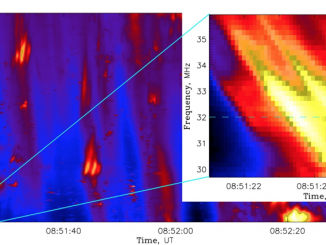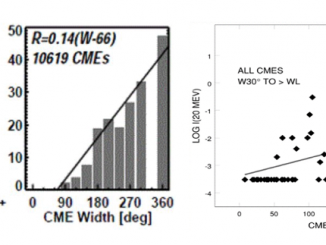First imaging spectroscopy observations of puzzling solar drift pair bursts
by A. Kuznetsov and E. Kontar
Drift pairs are a rare and puzzling type of solar radio emission, firstly identified by Roberts (1958). They occur at low frequencies (~10-100 MHz) and look like two parallel frequency-drifting narrow-band stripes separated in time. The drift rates (typically ~2-8 MHz/s) are intermediate between those of type II and type III bursts; both positive and negative frequency drifts are observed. The most enigmatic characteristic of drift pair bursts is that […]


